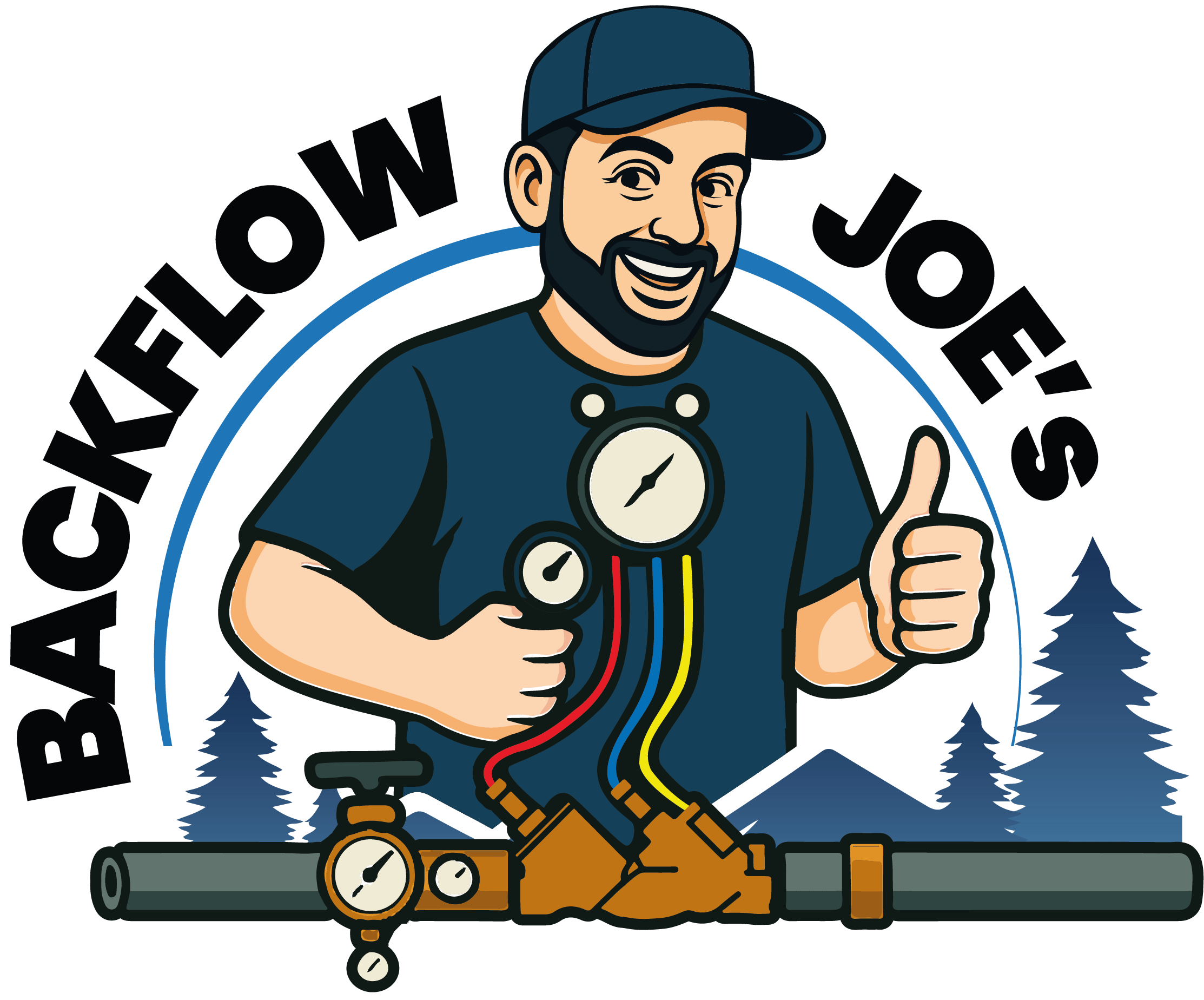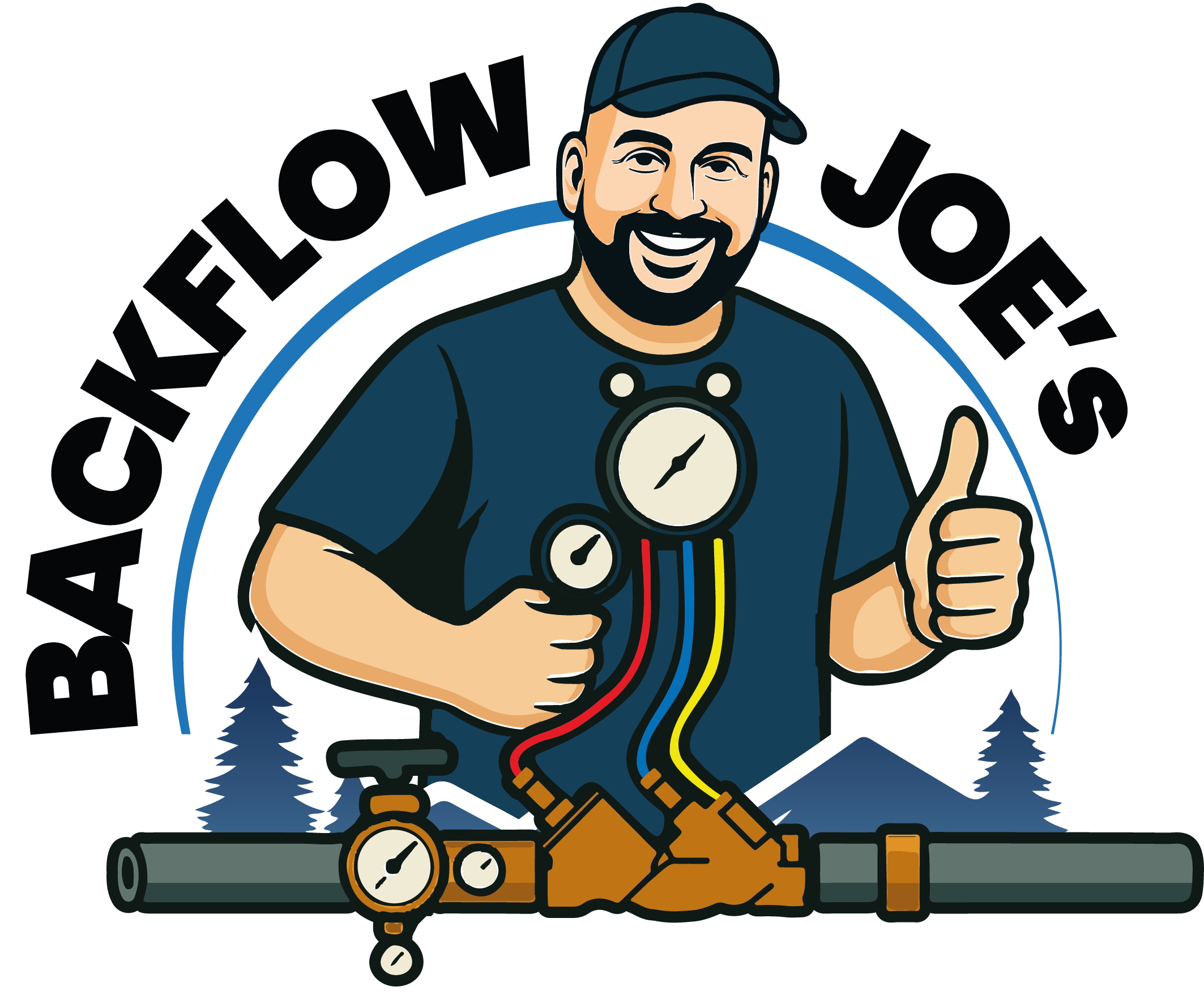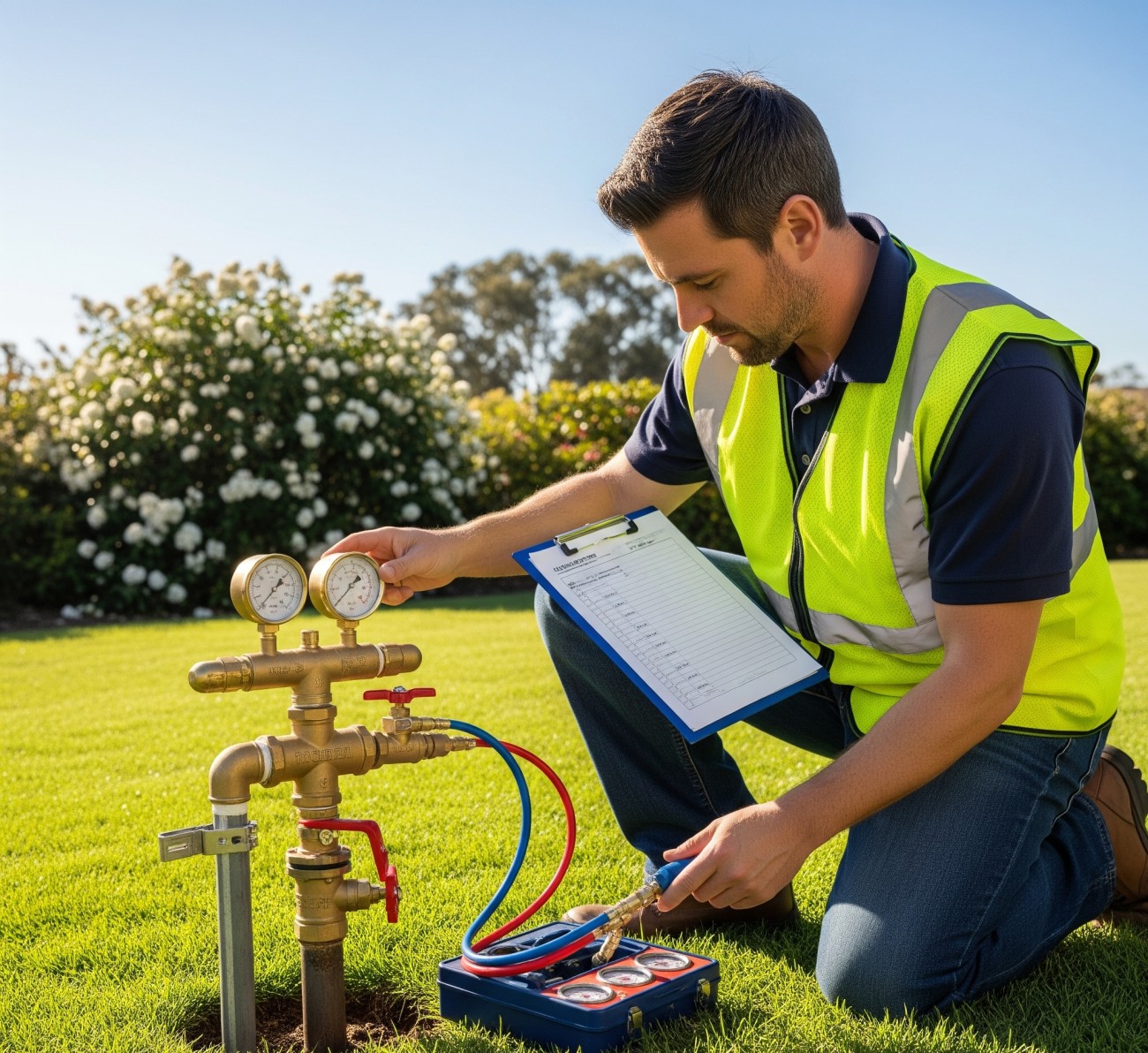If someone’s told you it’s time for your yearly backflow test, and you’ve made an appointment with Backflow Joe’s, you may be thinking: what does a certified backflow test even entail?
You’re not unique. Most homeowners and even some companies aren’t sure what backflow prevention testing is, other than it’s mandated, and not doing it can result in a fine or worse, compromised drinking water.
Why Is Backflow Testing Important?
A backflow test also makes sure that your backflow prevention device is functioning properly. That device is like a one-way gate. It makes sure water only flows into your house—not back into the main line.
That’s where we step in.
Step 1: Arrival and Check-In
When a certified Backflow Joe’s technician comes to your appointment, they will greet you first and verify the service request. If you are a first-time customer, we might also take you around your property to identify the backflow prevention device.
Depending on your configuration, the assembly may be over ground close to your meter, in a vault, in the rear of the building, or as part of your sprinkler system. Residential systems are most equipped with a Double Check Valve Assembly (DCVA) or Pressure Vacuum Breaker (PVB), though commercial configurations may utilize more sophisticated devices.
Step 2: Visual Inspection
Once the device is located, we begin with a visual inspection.
We’re checking for:
- Leaks, corrosion, or damage
- Missing or damaged test ports
- Signs of tampering or bypasses
- Proper installation height and orientation
- Debris or obstructions that could impact performance
If anything seems off before testing even begins, we’ll flag it and let you know. Some issues may need to be fixed before testing can proceed.
Step 3: Setup of Testing Equipment
Next, we hook up a differential pressure gauge, the primary tool used in backflow testing. It connects to the test cocks on the assembly and lets us measure pressure differences across check valves and relief valves inside the device.
For a DCVA, for instance, we’ll be checking:
- Whether the first check valve maintains a minimum pressure of 1.0 psi
- Whether the second check valve also holds its required pressure
- Whether both valves close tightly to prevent backflow
Step 4: Conducting the Test
Now we are performing the actual test.
This process takes 15 to 30 minutes depending on the device type, accessibility, and condition. We follow procedures outlined by the University of Florida TREEO Center and comply with local water authority standards.
We’re looking for:
- Pressure drops across each check valve
- Opening pressure of relief valves
- Any unexpected leaks or discharge
- Proper operation under simulated backflow conditions
If all readings are within safe parameters, the device passes. If anything fails, we note the issue and advise on the next steps.
Step 5: Recording Results
Once testing is complete, we fill out the official backflow test report. This document includes:
- Date and time of test
- Make, model, and serial number of your assembly
- Test results and pressure readings
- Technician’s certification info and license number
- Pass/fail status
Backflow Joe’s handles all paperwork for you. If your local water authority requires submission (which most in New York do), we take care of it electronically or physically depending on the municipality. You also get a copy for your records.
Step 6: What If It Fails?
Failure doesn’t mean disaster. It just means the assembly didn’t meet required standards, but don’t worry, we’re already prepared to fix it.
Depending on the issue, we may:
- Clean or rebuild check valves
- Replace faulty springs or rubber components
- Replace the entire assembly if it’s too damaged or outdated
We’ll explain exactly what’s wrong, what your options are, and the cost (up front, no surprises). Most fixes can be completed on the same day.
Once the repairs are made, we will perform a retest at no extra charge and submit the updated results.
Step 7: Providing Certification
Once everything is in order, we issue your certification and submit it to the proper authority. You’re now compliant for the next 12 months.
We also keep a record in our system and send you a reminder before your next test is due so, you never miss a deadline or risk fines.
Why Choose Backflow Joe’s?
There are dozens of backflow testers out there. But here’s why our customers stick with us year after year:
- Certified & Insured Technicians: We’re licensed in all local jurisdictions.
- Fast Paperwork: No scrambling to figure out where to send the results.
- Transparent Pricing: No hidden fees. No bait and switch.
- Prompt Scheduling: We respect your time and your water supply.
- One-Stop Shop: Testing, repairs, rebuilding, installations, we handle it all.
Backflow isn’t something you want to trust to just anyone. It directly affects your drinking water. You want someone who knows what they’re doing and does it right the first time.
FAQs
How often do I need to test my backflow assembly?
Most New York municipalities require annual testing. Some high-risk facilities may require more frequent tests.
Do I need to be available at home for the test?
Not always. If the assembly is outside and accessible, we can test it without entry. But we always confirm ahead of time.
What if I don’t test my backflow device?
You could face fines or even have your water shut off until compliance is met. More importantly, it puts your water and your neighborhood’s water at risk.
Final Thoughts
A certified backflow test isn’t just a checkbox for code compliance; it’s a key part of keeping your water safe and your plumbing system running as it should. At Backflow Joe’s, we make it painless, professional, and clear from start to finish.






